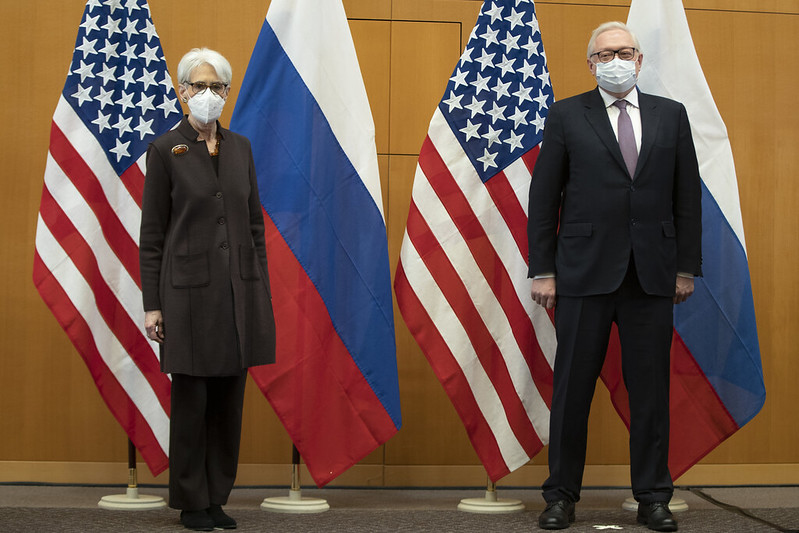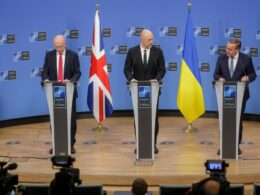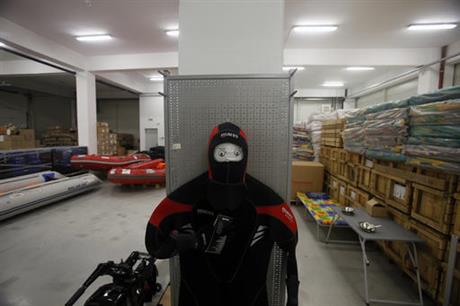There are four ways NATO can help Ukraine resist Russian aggression. Two of them will actually work.
An ultimatum in any language: experts on Russia’s demand that NATO not expand
Scenarios of Western help for Ukraine
Proposals on the strategy for resolving the "Ukrainian crisis" among state leaders and security specialists from NATO countries roughly fall into 4 groups:- Diplomacy of deterrence and compromise with Russia without providing significant assistance to Ukraine in strengthening its defense capabilities, especially in the components of lethal weapons (political leadership of Germany);
- Adapting existing instruments of NATO cooperation for operational assistance to Ukraine, including strengthening economic sanctions against Russia, temporary deployment of additional training missions (John Bolton, Canadian political leadership), providing a number of lethal weapons at the level of bilateral agreements between NATO member states and Ukraine (Congressmen Ted Cruz and Mitch McConnell, UK political leadership);
- Creating a fundamentally new deterrence initiative for Ukraine as an individual support program or as a continuation of the Alliance's Enhanced Opportunity Partnership (Alexander Vershbow);
- Active involvement of NATO forces to ensure strategic parity with Russia, accelerated provision of the NATO Membership Action Plan to Ukraine, and intensification of Ukraine's preparations for NATO membership (Baltic and Polish political leadership, Anders Fogh Rasmussen).
This would lead to a collapse of the Alliance as a system of collective defense of the civilized democratic world.
Difficulties of assistance
In its core, the proposal to temporarily deploy an additional NATO training contingent in Ukraine, combined with synchronized arrangements for the provision of lethal weapons at the level of bilateral cooperation with NATO countries, could have the effect of deterring Russian aggression. The list of weapons Ukraine needs has been repeatedly submitted both to individual countries and at the level of NATO. For some time, there was hope that the Alliance would provide weapons, although NATO has no weapons of its own at all. The Alliance can give political consent for its member countries to consider providing such weapons and to establish an appropriate program of assistance to a particular country. At the moment, we are primarily talking about anti-tank and anti-aircraft defense systems, as well as restoring the potential of Ukraine's Navy. However, if not stationary anti-aircraft missile systems, but portable ones (for example, Stingers) are discussed, we must remember such supplies also have limitations. There are special international programs to prevent the transfer of anti-aircraft missile systems so that they do not fall into the hands of militants and do not pose a threat to civilian aircraft. From the practice of bilateral cooperation, the issue of delivering weapons is considered by each specific country to which Ukraine appeals. It assesses the possibility of providing weapons: either from the excess reserves of its armed forces, or from surpluses generated by enterprises, or under additional contracts. Here coincide many complicated political, security, and commercial components. As the realities show, it is not so easy to provide so-called lethal weapons to another country, even with the appropriate decision of the owner state."What we are are currently considering or working on are Javelin missiles for anti-tank missile systems, and we are considering, or planning, to provide 122 mm howitzers together with their ammunition," said Peeter Kuimet, head of the Estonian Defense Ministry's international cooperation department, on December 30.The official explained that before transferring Javelin missiles, you need to obtain permission from their manufacturer -- the United States.
"In the case of howitzers we bought in Finland, which in turn bought them from Germany, we have to ask Germany and Finland to agree to the transfer of weapons, and we have already started this process with these countries," Kuimet said.Will it be easy to achieve proper synchronization of actions and instruments with more than a dozen Allies without institutional coordination, even with the active assistance of the Anglo-Saxon NATO countries (USA, Canada, UK)? How can questions of supply logistics, servicing, and training of Ukrainian servicemen to use the new expensive equipment be solved without the involvement of other European members of NATO? Thus, the timing of specific assistance to Ukraine also depends to a large extent on how quickly negotiations between NATO allies take place. It is obvious that without the political coordination of a comprehensive package of assistance to Ukraine at the Alliance level, this process will take years.
A clear marker on this issue could be last year's "case" blocking Ukraine's purchase of 90 Barrett M82 sniper rifles and 20 EDM4S anti-drone systems through the procedures of the NATO Support and Procurement Agency (NSPA).
- Read also: Germany blocks Ukraine’s arms purchase from NATO as unofficial arms embargo on Ukraine continues
Is Ukraine getting closer to NATO membership?
Ukrainian deterrence initiative
NATO is a consensus-based organization established by its members. We should not expect that for the sake of Ukraine these principles will be changed.However, the Alliance has begun to draw some conclusions to ensure its own capacity in a crisis.
Under normal NATO procedures, this would mean that sanctions are not approved at all.
"This could take the form of a Ukrainian Deterrence Initiative (UDI) that would be an extension of the Alliance’s Enhanced Opportunity Partner (EOP) program. Under this approach, Allies would make it a strategic objective to do everything possible, short of extending an Article 5 guarantee, to help Ukraine defend itself and resist Russian destabilization. By maximizing Ukraine’s capacity to impose significant costs on Russia for future aggression, NATO would not only bolster Ukraine’s deterrence but increase its leverage for achieving a political settlement in the now-moribund Minsk negotiations."We will not consider the Mr. Vershbow's overly optimistic view of the prospects of the Minsk and Normandy formats. Because the main thing now is to find an effective tool to provide Ukraine with the necessary assistance to build a critical capacity to deter Russian aggression in a very limited time. According to the former Alliance official, such an initiative would encompass not only military equipment and training, but measures to increase Ukraine’s resilience against cyber-attacks, disinformation, economic warfare, and political subversion, recognizing that Ukraine has been Russia’s number one target and laboratory for the dark arts of hybrid warfare. Similar support could be offered to Georgia and, if requested, to Sweden and Finland, all of which are already have EOP status and face constant Russian military and political pressure. It could build on the example of the bilateral US-Georgian Defense and Deterrence Enhancement Initiative signed by Secretary Austin in the autumn of 2021. In addition to this example, the Alliance may also refer to the practice of the European Deterrence Initiative (EDI). This program was launched by the United States in June 2014 in response to the temporary occupation of Crimea by the Russian Federation to support the activities of the US military and its allies in Europe.
EDI activities include:
- training in the armed forces;
- multinational military exercises;
- the development of military equipment and capabilities.
A new Lend-Lease
Trending Now
the supply of modern weapons, the transfer of some of its production technologies and staff training are high-value services that are currently incomparable with Ukraine's budget.
- establishing joint military training centers, such as the one in Georgia in 2014 (JTEK);
- a joint naval training and service center in the Black Sea;
- more NATO exercises in the region.
NATO’s defining moment is now or never
How Ukraine currently cooperates with NATO
Today Ukraine has scarce instruments to cooperate with the North Atlantic Alliance. Moreover, none of them, in terms of their format, resources and goals, meets the requirements of the current threat posed by Ukraine due to growing pressure from Russia.There is no denying the positive effect on Ukraine's security and defense sector of NATO's Partnership for Peace program, regular activities under the Annual National Program under the aegis of the NATO-Ukraine Commission, or the potential to enhance compatibility with Ukraine's participation in NATO's Enhanced Opportunity Partnership.
- NATO Advisory Assistance;
- Logistics Trust and standardization;
- the Cyber Defense Trust Fund;
- the Medical Rehabilitation Trust Fund;
- the Military Retraining and Social Adaptation Program;
- the Force Planning and Assessment Process, etc.
 Oleksandr Kalinichenko is an international lawyer and head of the Notes of the Atlantist project.
Oleksandr Kalinichenko is an international lawyer and head of the Notes of the Atlantist project.
Related:
- An ultimatum in any language: experts on Russia’s demand that NATO not expand
- Is Ukraine getting closer to NATO membership?
- 58% Ukrainians support joining EU, 54% in favor of NATO, IRI Ukraine poll shows
- NATO’s defining moment is now or never
- Ukraine will become NATO member when three capitals change their views, Foreign Minister says





